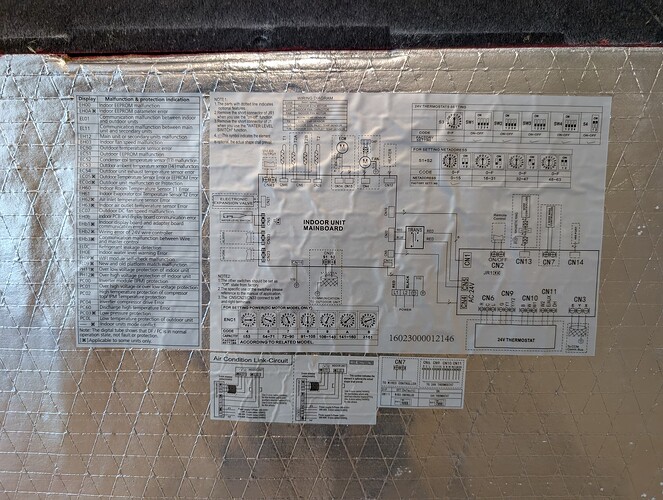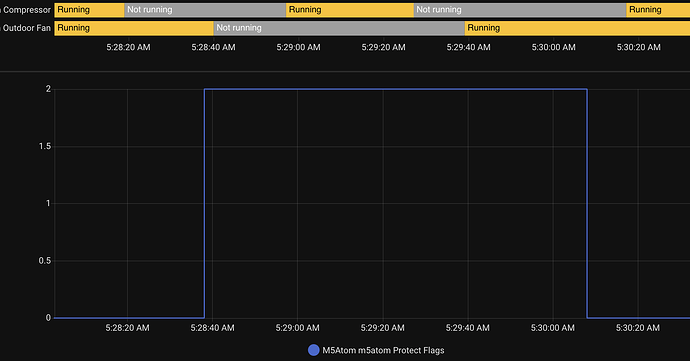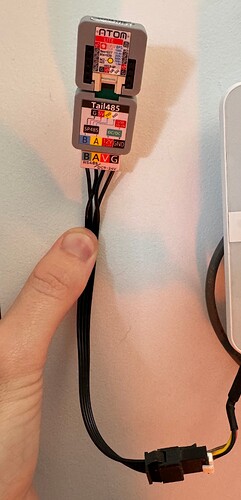I am happy to see you progressing this.
I have a ducted minisplit that is senville branded. I have spent an unbelievable amount of time working on this myself. My home had an addition that was not ducted with the main central heat pump, so we had a mini split installed. The thermostat is on the same wall our fireplace is on, and the addition is all windows, so it gets very cold in the winter towards the back of the addition where we sit. I wanted to do a remote mounted temp sensor (which i use to control our fireplace) to control the minisplit to make everything work in sync and provide interlocks so someone isn’t turning on the main unit heat, and running ac out in the addition.
There are a LOT of threads out there about the midea communications. My unit had a wall thermostat that was 5 wire. Most of the threads talk about the 4 wire thermostats. My unit has multiple communication busses. I have tried to switch to the 4 wire thermostat and an esp32 connected to the remote unit in the crawl space that is connected to the older 5 wire thermostat. I removed the Tsop from that board and hard wired the esp32 to send IR follow me commands, then using the uart through a level shifter to set the temp, control on and off, and such, however I don’t fully feel its working properly. The unit never actually shuts the fan down. It does ramp, I do have it regulating temp, but the fan never shuts down when the fan is set to “auto”
Now knowing what I do now and understanding how the follow me commands work, I should have just removed the temp sensor from the internal board, used a digital pot to control the temp remotely. It probably would have been a lot easier.
The issue I have is once I switched to the 4 wire thermostat, it will only display Celsius. I have contacted Senville, they sent me a second thermostat for free saying that it should display Fahrenheit but it doesn’t. I spent a lot of time on the phone with the tech support about it and it was never resolved.
It also seems as though the uart is expecting *C where as the IR commands are sent to the receiver board as *F and displays *F
I have not found a way to do the follow me commands with UART that completely bypasses any IR commands. I can’t use the 5 wire thermostat because it doesn’t update when the esp32 changes the the set temp via uart because it does not have 2 way communication it appears.
I would like to dig into the rs485 side of things because it seems as though that is the only communication protocol that does everything. I don’t understand the logic of all of these different communications especially when they do not all talk to each other.
My board has RS485 marked on it, and its been a little while but I believe it says xye as well somewhere. I will continue to follow this thread!







